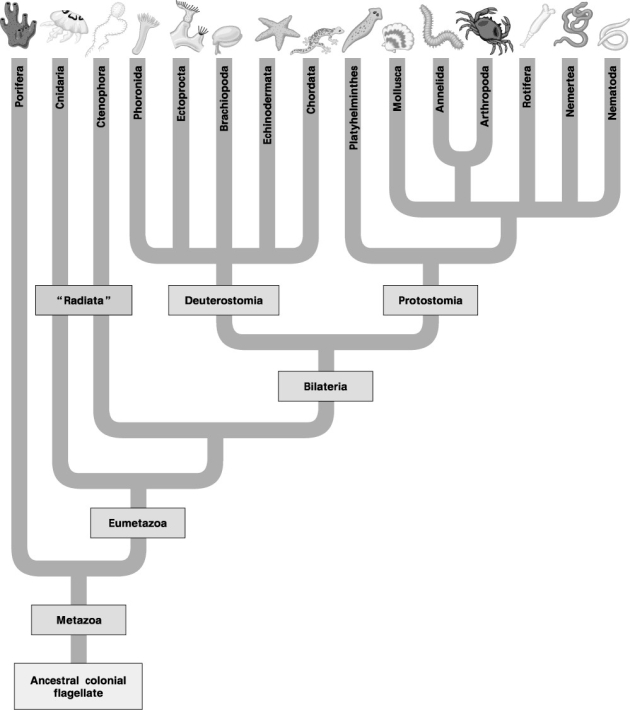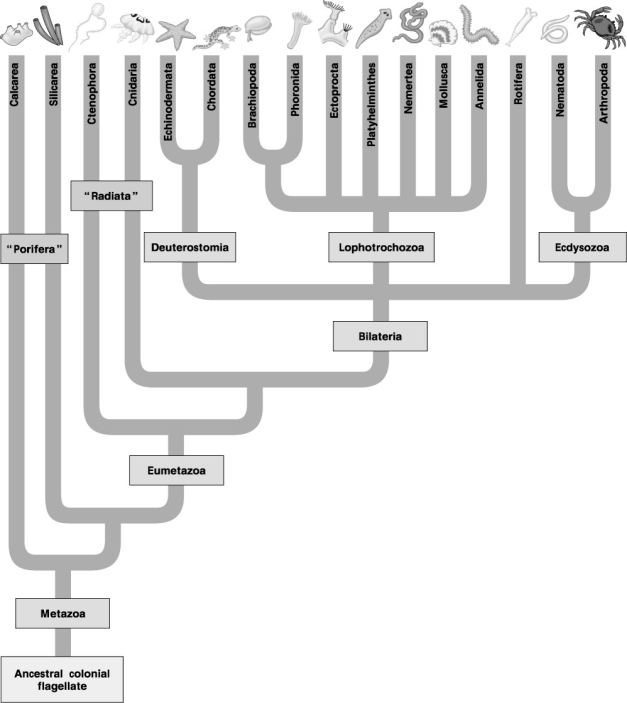The following eight questions refer to Figure 32.2A (morphological) and Figure 32.2B (molecular) phylogenetic trees of the animal kingdom.

Figure 32.2A: Morphological Phylogeny

Figure 32.2B: Molecular Phylogeny
-In the traditional phylogeny (Fig. 32.2A) , the phylum Platyhelminthes is depicted as a sister taxon to the rest of the protostome phyla, and as having diverged earlier from the lineage that led to the rest of the protostomes. In the molecular phylogeny (Fig. 32.2B) , Platyhelminthes is depicted as a lophotrochozoan phylum. What probably led to this change?
A) Platyhelminthes ceased to be recognized as True protostomes.
B) The removal of the acoel flatworms (Acoela) from the Platyhelminthes allowed the remaining flatworms to be clearly tied to the lophotrochozoa.
C) All Platyhelminthes must have a well-developed lophophore as their feeding apparatus.
D) Platyhelminthes' close genetic ties to the arthropods became clear as their Hox gene sequences were studied.
Correct Answer:
Verified
Q39: With the current molecular-based phylogeny in mind,
Q58: The following questions are based on the
Q60: The following questions are based on the
Q61: The following eight questions refer to Figure
Q62: Which of the following was the least
Q63: Acoelomates are characterized by
A) the absence of
Q64: The following eight questions refer to Figure
Q65: Table 32.1. Proposed Number of Hox Genes
Q67: Some researchers claim that sponge genomes have
Q73: Among the characteristics unique to animals is
A)
Unlock this Answer For Free Now!
View this answer and more for free by performing one of the following actions

Scan the QR code to install the App and get 2 free unlocks

Unlock quizzes for free by uploading documents